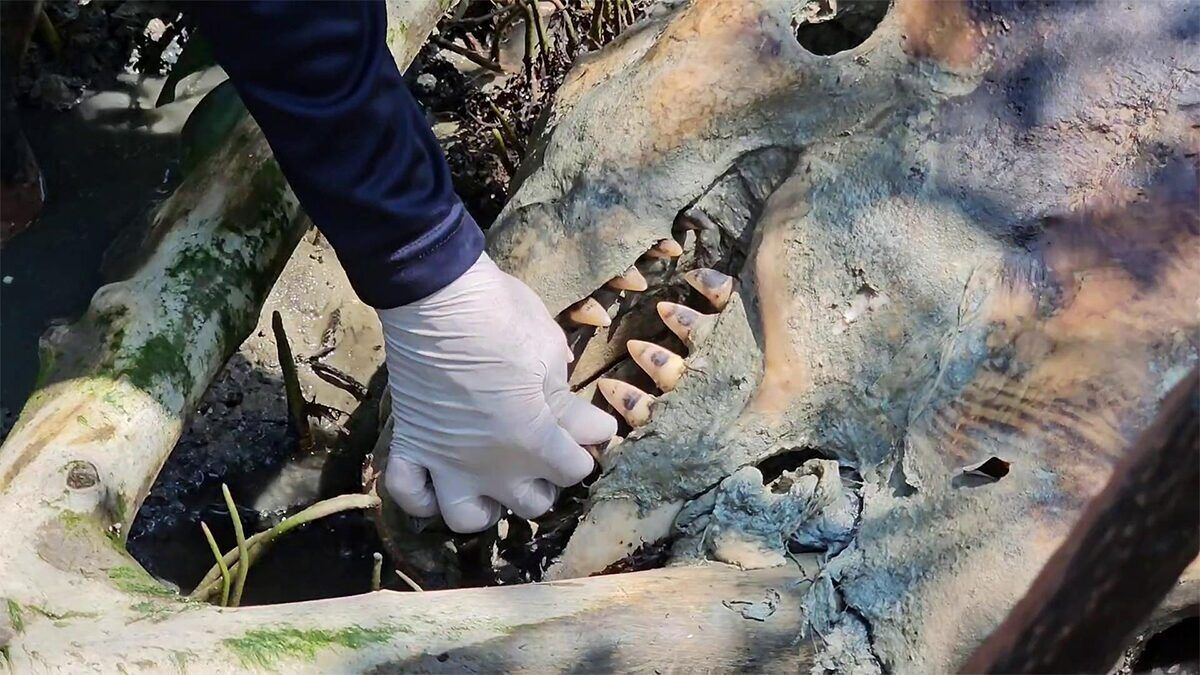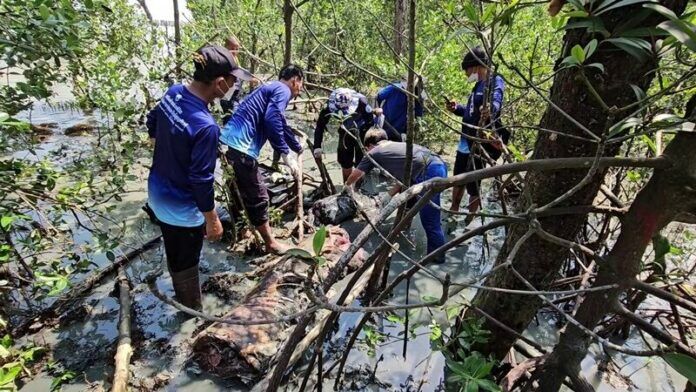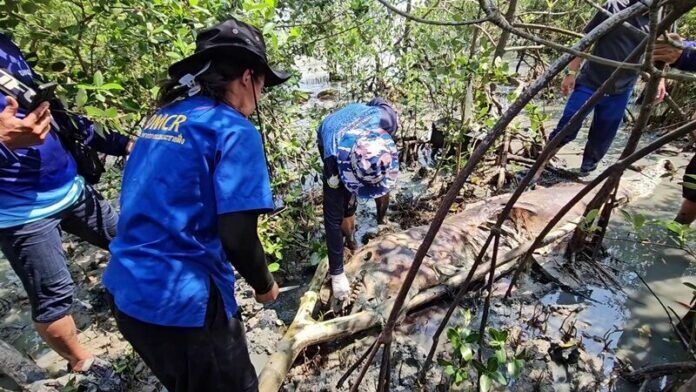Alien panic in paradise: ET find turns out to be deep-sea giant

In a scene reminiscent of a sci-fi thriller, a group of Thai villagers were sent running for the hills after stumbling upon what they believed to be the lifeless remains of a dead alien. But once nerves had settled, they returned to the site, only to discover the so-called alien was actually a rare marine creature washed ashore from the depths of the Gulf of Thailand.
The Rare and Endangered Marine Animal Rescue Network today, January 20, sprang into action. Experts from the Department of Marine and Coastal Natural Resources, along with researchers and veterinarians from the Lower Gulf of Thailand Marine and Coastal Resources Research Centre, descended upon the mangrove forest in the Ao Pak Phaya conservation area, located in Village 6, Tha Sak Subdistrict, Nakhon Si Thammarat province.
The drama unfolded when local fishermen first caught sight of what they thought was a decaying crab, only to realise it was a much larger creature with fearsome fangs.
The rumour mill went into overdrive, fueled by photos of its teeth that measured over a foot long, leaving everyone to speculate wildly about an alien invasion or an undiscovered species.
Local Thai officials, navigating the muddy terrain, used boats to access the site, then trekked 50 metres into the mangrove forest. Upon laying eyes on the remains, officials quickly identified the creature as a black killer whale, a marine mammal more comfortable in the ocean’s darker depths.
In their endeavour to piece together the puzzle, officials collected vital samples, including stomach contents, crucial tissues, and the whale’s head, for analysis in a lab.

Given the challenging muddy conditions and the site’s distance from human habitation, the leftover remains were left to decompose naturally, providing sustenance for local wildlife.
Pinij Bansuwan, the eagle-eyed local crab hunter who first discovered the whale’s remains, recounted his astonishment.
“I was setting a crab trap when I saw this huge, decaying creature with long sharp teeth. I panicked and ran! I’ve never seen anything like it!”
He confessed to KhaoSod reporters that he can now laugh at the memory.
Once he’d regained his composure, he captured the scene and shared it, sparking a frenzy of speculation. The village was abuzz with theories ranging from mythical beasts to alien visitors.

Dr Rattanaporn Phakphian, a researcher with the Marine and Coastal Resources Research Center, explained that the black killer whale is a rare sight, normally dwelling in the depths of the sea.
“It’s unusual to spot them near the shore, and reports are scarce. This particular specimen is a juvenile, around 3.5 metres long, but fully grown, they can reach about 6 metres. Sadly, due to decomposition, we can’t determine its gender.”
Dr Rattanaporn speculated that the poor creature likely fell prey to recent fierce winds and high tides, driven into the canal and ultimately trapped in the mangrove forest.
“Although its condition makes it difficult to diagnose the precise cause of death, further tests on collected samples will hopefully shed light on this marine mystery.”
In the meantime, the villagers will undoubtedly have a captivating tale to share, blending cosmic intrigue with earthly reality: a story of mistaken identity that almost ended in an alien invasion… if only for a day.

Latest Thailand News
Follow The Thaiger on Google News:


























